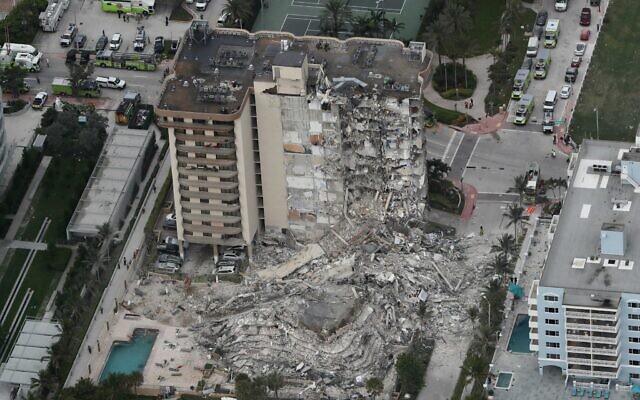Surfside condo sank for decades and so are other Miami structures: FIU prof

Research from Florida International University found that the Champlain Towers condominium building that collapsed in Surfside, Miami-Dade County, Florida had been steadily sinking for years.
FIU earth sciences professor Shimon Wdowinski had found evidence that parts of Miami Beach and Surfside had been gradually sinking at a steady rate for decades, partly due to a rise in sea levels, according to data gathered by satellites in the 1990s. Wdowinski had revealed in a video interview produced by FIU the precise spot of the June 24 building collapse. His study was published in the 'Ocean & Coastal Management' journal in December 2019, the Miami New-Times reported.
Wdowinski said in the interview that the findings in Surfside were rather unexpected. He explained that while the western part of the barrier island was vulnerable as it was built on reclaimed wetland, the eastern side was built on a much more solid foundation. Nonetheless, Wdowinski and his team discovered an unusual pocket of movement underneath the 12-story condo building, which is situated on the eastern side along the oceanfront. The condo was reportedly sinking at a rate of about 2 millimeters per year from 1993 to 1999, according to satellite data gathered by Wdowinski.
Investigators are yet to establish the exact cause of the horrifying collapse. FIU's engineering college chair Atorod Azizinamini noted that a probe into the root cause of the destruction could take months to reach a conclusion. According to Wdowinski, the gradual sinking itself is unlikely to have resulted in the collapse. However, he said it was alarming any time the ground underneath a building starts to move.
“When we measure subsidence or when we see the movement of the buildings, it’s worth checking why it happens,” Wdowinski said. “We cannot say what is the reason for that from the satellite images but we can say there was movement here.”
Miami Beach experienced subsidence at the rate of 1-3 millimeters per year in the 1990s. This could add up to a couple of inches of movement over a decade, but Wdowinski said it was considerably slower when compared to other parts of the planet he had studied. For example, he cited Mexico City, which is said to be subsiding at a rate of a staggering 15 inches per year. The same technology used to detect land subsidence can be used to detect vulnerable buildings in order to prevent future calamities, the researcher posited.
In 2020, a separate study published by Wdowinski reportedly found structural damage at several other sinking areas in Miami, mostly around Biscayne Bay. It found cracks on structures at Matheson Hammock Park, Morningside Park, Haulover Park, and FIU's Kovens Conference Center. All the aforementioned properties were built between 1930 and 1960 on reclaimed marshland, according to the Miami News-Times.
The study featured photos of cracks on sidewalks, stairs, as well as seawalls at the locations. Researchers assured there was no imminent danger at those sites, but noted that the damage suggested Florida's southeast coast was gradually sinking in a number of places around Miami-Dade County.According to the research, land subsidence in South Florida is often caused when developers build atop reclaimed wetlands. The underlying rock is pressed down by buildings and cement structures, and intense pressure over time results in sediment compaction. The process can reportedly even cause sinkholes in some other parts of Florida.
The danger posed by sea-level rise and land subsidence may lead to further property damage and risk of floods in South Florida in the future, Wdowinski's study concluded.

No comments:
Post a Comment